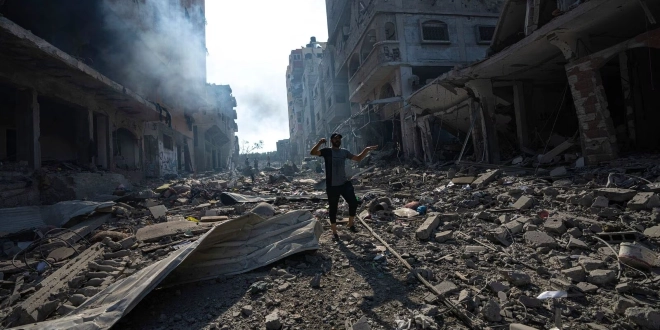After over 100 days of conflict, the Israel-Hamas war has resulted in extensive casualties and widespread destruction, particularly in the Gaza Strip. The war commenced with a deadly attack by Hamas in southern Israel on October 7, triggering a severe Israeli response involving airstrikes and ground operations in Gaza. The United Nations and aid organizations warn of a humanitarian crisis affecting the 2.4 million inhabitants of Gaza, with significant parts of the area reduced to ruins.
Gaza’s health ministry, under Hamas control since 2007, reported over 60 deaths and numerous injuries from the latest intense Israeli strikes. Targets included two hospitals, a girls’ school, and multiple residences.
Repeated bombings have left most of Gaza’s hospitals non-operational, according to the World Health Organization (WHO). Israel asserts that Hamas militants use civilian facilities and underground tunnels for military purposes, a claim Hamas denies.
Recent strikes focused on Khan Yunis, Rafah, and areas around Gaza City. The Israeli military reported targeting militants in Khan Yunis and seizing weapons from a Hamas command center.
The UN estimates that the ongoing conflict has displaced approximately 85% of Gaza’s population, leading to severe shortages of essentials like food, water, and medical supplies. The situation is dire, with displaced individuals like Mohammad Kahil from northern Gaza struggling to survive in harsh conditions.
In the West Bank and along the Israel-Lebanon border, tensions have escalated, with daily skirmishes involving Israeli forces and Hezbollah. Meanwhile, the U.S. is engaged with Iran-backed Yemeni rebels in the Red Sea, further intensifying regional tensions.
The conflict has had a heavy toll on Israel as well, with approximately 1,140 deaths, mostly civilians. Hamas’s initial attack also led to the seizure of around 250 hostages, with Israel asserting that 132 remain in Gaza, including at least 25 believed deceased.
The Israeli military campaign, aimed at dismantling Hamas, has resulted in at least 23,968 deaths in Gaza, predominantly women and children. The grim reality of the conflict was underscored at Al-Aqsa hospital in central Gaza, where bodies were seen piled on a donkey cart.
The WHO’s Director-General, Tedros Adhanom Ghebreyesus, described the situation in Gaza as a living hell, echoing UN warnings of an impending famine. The lack of healthcare and the spread of diseases among the densely populated and confined population are major concerns.
International pressure is mounting on Israel due to the high civilian casualties in Gaza. Israeli Prime Minister Benjamin Netanyahu faces domestic scrutiny over the handling of the October 7 attacks. In Tel Aviv, hundreds gathered to demand action for the rescue of remaining hostages, 100 days into the war.
A Hamas spokesman suggested most hostages in Gaza might be deceased, blaming Israeli leadership for their fate, although this claim is unverified.
Regional violence has surged since the war’s onset, with the Houthis in Yemen launching attacks in solidarity with Gaza. The U.S. military reported intercepting a missile aimed at the USS Laboon in the Red Sea, marking an escalation in Houthi aggression.
Hezbollah’s leader, Hassan Nasrallah, claimed Israel hasn’t achieved a significant victory in Gaza, predicting an eventual diplomatic resolution. Diplomatic efforts for peace are underway, with China’s Foreign Minister Wang Yi and Australia’s top diplomat Penny Wong actively involved in seeking a peaceful solution in the Middle East.
In Turkey, Israeli footballer Sagiv Jehezkel faced accusations of incitement after celebrating a goal with a message referencing the war
duration, causing tension given Turkey’s support for the Palestinian cause.


